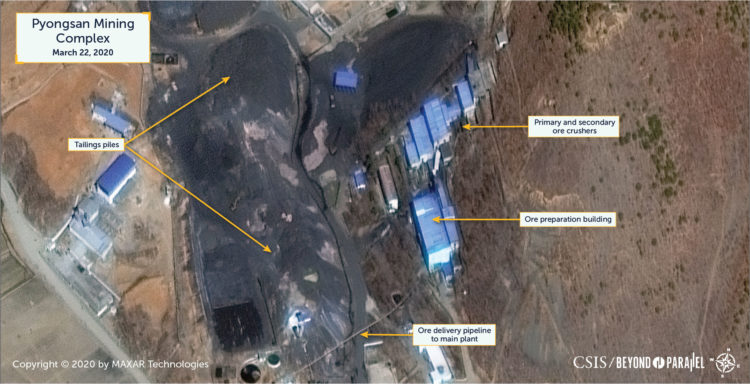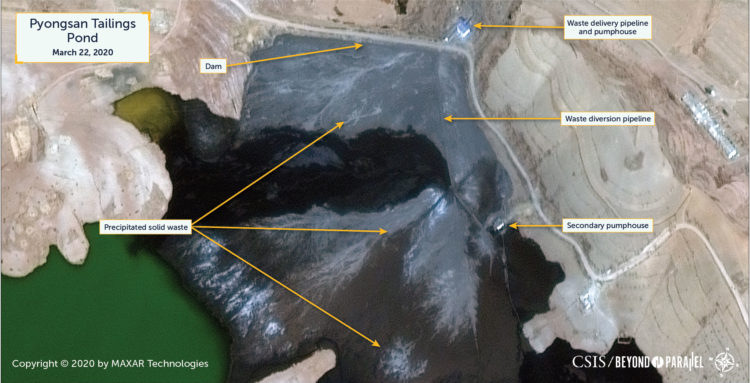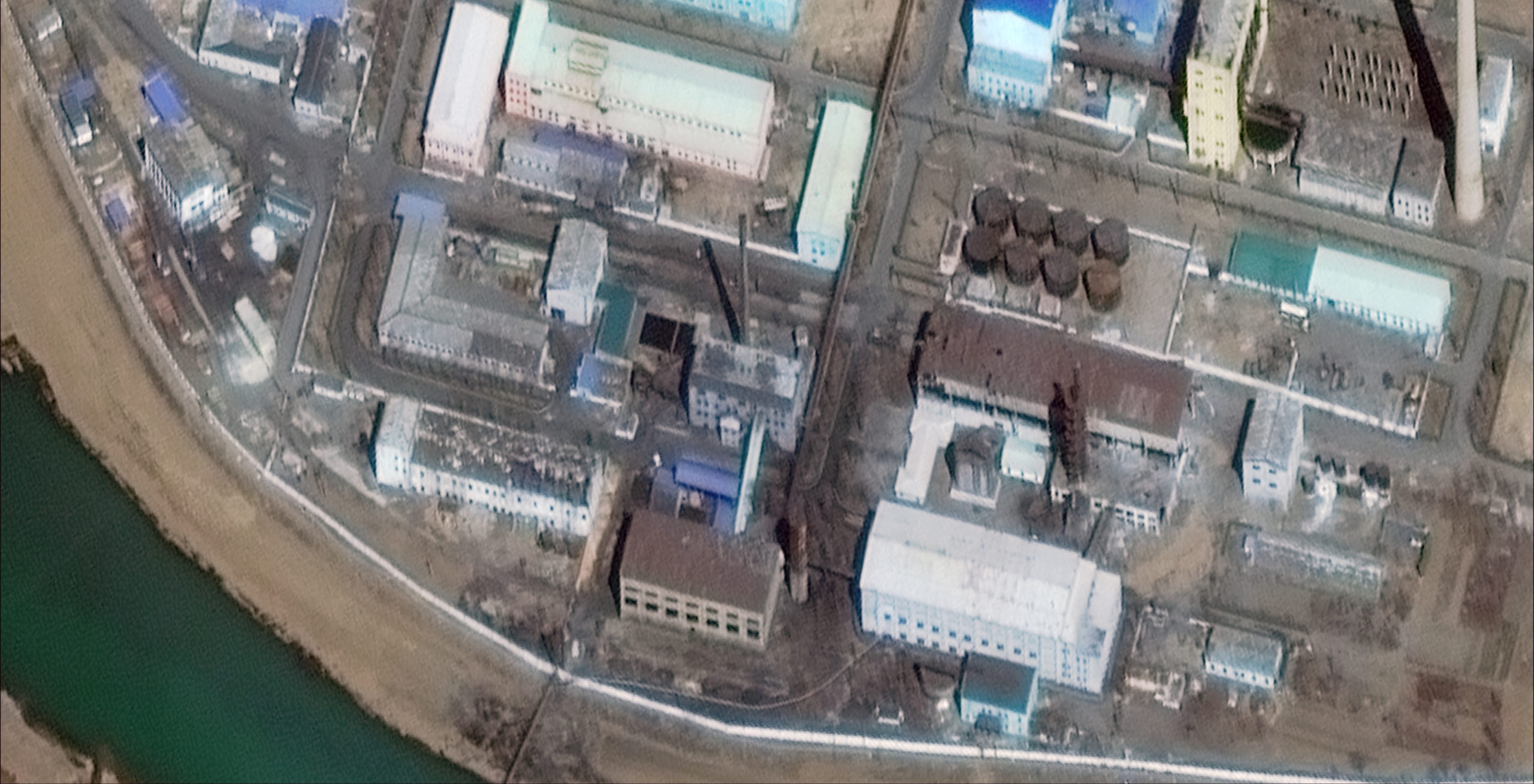
Pyongsan Uranium Concentrate Plant (Nam-chon Chemical Complex)
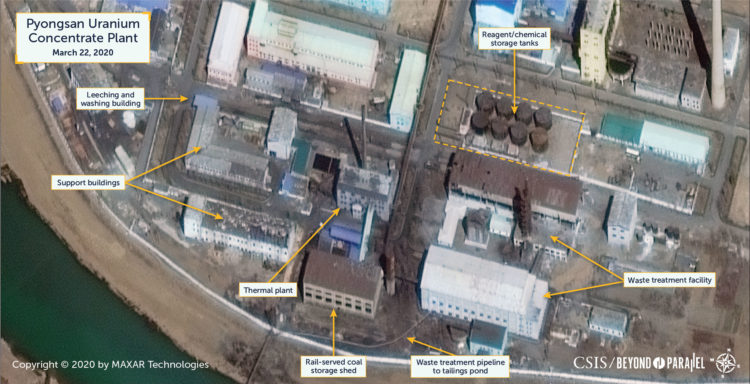
Key Findings
- Recent satellite imagery shows that the Pyongsan Uranium Concentrate Plant remains operational and continues to be updated, despite the absence of any nuclear testing by North Korea since 2017.
- This facility is critical as it is the sole known source of feedstock for uranium hexafluoride (UF6) used for the production of highly enriched uranium for North Korea’s advanced nuclear weapons program.
- Its dismantlement would be an essential component of any meaningful denuclearization agreement.
- These commercial satellite images and the full CSIS Beyond Parallel report to follow next month are among the first to provide details about this element of North Korea’s nuclear program.
- Located 45 kilometers from the DMZ, the Pyongsan Uranium Concentrate Plant represents a critical component within North Korea’s nuclear research and weapons development programs as it has been the sole known producer of uranium concentrate (yellowcake) in the country since the mid-1990s, when it superseded the Pakchon Pilot Uranium Concentrate Facility.
- The plant’s importance to the North Korean leadership and its critical position within the nuclear research and weapons development programs is attested to by the fact that scarce human and financial resources have been consistently allocated to actively maintain, refurbish or modernize the plant since 2003, and probably since its construction.
- Given the current level of development and activity observed at the plant and its associated facilities, it is highly likely to remain active for the foreseeable future.
- Although the International Atomic Energy Agency (IAEA) has not been able to visit the Pyongsan Uranium Concentrate Plant since 1992, satellite imagery and open source material indicate that the plant is operational and although production tempo has fluctuated—due to maintenance and modernization requirements, the needs of the nation’s nuclear programs, the operational status of its reactors and gas centrifuge plants and the availability of electricity—it has proceeded relatively steadily.
- Given known North Korean industrial practices, observed waste storage practices, and health and safety concerns raised by defectors and outside observers, there are numerous health, safety and environmental issues surrounding its operations.
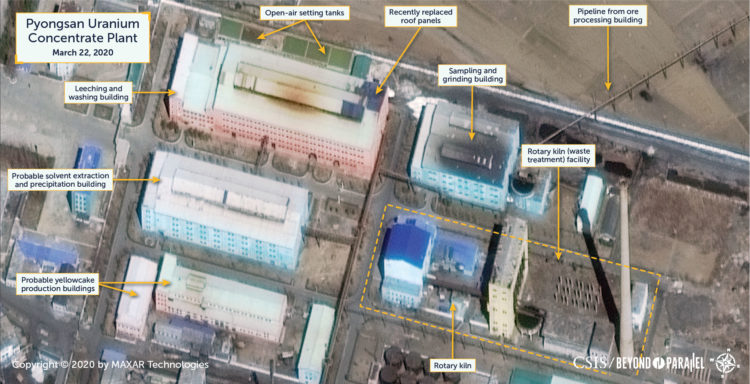
Overview
The Pyongsan Uranium Concentrate Plant (38.318369 N, 126.432360 E) is located in Pyongsan-gun (평산군, Pyongsan County), Hwangbuk-do (황북, North Hwanghae Province), approximately 45 kilometers from the DMZ and 96 kilometers northwest of Seoul—the capital of South Korea. Since approximately 1990 it has occupied an critical role in the Democratic People’s Republic of Korea’s (North Korea) nuclear research and weapons programs as the sole known provider of uranium oxide (yellowcake) to these programs for fuel fabrication or enrichment. While the information remains to be verified, experts, defectors and early South Korean sources estimate that the yellowcake produced by the plant contains 80% triuranium octoxide (U3O8) by weight. According to what the North Koreas told Hans Blix, Director General of the IAEA, during his May 1992 familiarization visit, the plant also produces other products such as vanadium and nickel.
During the early-1990s, both Chon Chi-pu, reportedly the chief engineer of Yongbyon Fuel Rod Fabrication Plant, and Kim Tae-ho, a defector who worked on a “waste water disposal team” at the Pyongsan plant have stated that the yellowcake produced at Pyongsan was shipped to the Yongbyon Nuclear Research Facility where it was ultimately used to produce fuel assemblies for the 5MWe and IRT reactors. Today, it also provides the feed stock for both uranium hexafluoride (UF6) production for the Centrifuge Enrichment Plant and likely for future fuel assemblies to be used in the Experimental Light Water Reactor.
Control and subordination of the Pyongsan Uranium Concentrate Plant is challenging to delineate. Kim Tae-ho, a defector who worked at the plant, has stated in several May 1994 press conferences that while the plant was managed by the Ministry of Atomic Energy Industry, it was under the direct control of the direct control of the Korean Workers’ Party’s Machine Industry Department’s Second Economic Committee – specifically, the Second Economic Committee’s 5th Machine Industry Bureau. If correct, it is unclear what roles the Academy of National Defense Sciences’ Nuclear Bureau and State Academy of Sciences and its Hamhung Branch play. The Ministry of Mining Industry’s is believed to operate the mining complex but it is likely under the direct control of the direct control of the 5th Machine Industry Bureau.
Due to its critical position within the nation’s nuclear program it is believed that security for the facility (and the associated mining complex) is provided by a combination of the Ministry of State Security and the Guard Command—directly subordinate to Kim Jong-un.
While it is unclear if the subject came up during the abortive February 27–28, 2019 Hanoi Summit, the dismantlement of the Pyongsan Uranium Concentrate Plant should be an essential component to any meaningful future “complete, verifiable, irreversible dismantlement” nuclear agreement between the United States and North Korea.
